Text: Irene Daum | Section: Articles about Artists
Summary: In her collages, Düsseldorf artist Barbara Herbert critically examines topics such ascorporeality, sensuality, classical and contemporary body images. She traces developments from the Renaissance to the present image of femininity which is strongly influenced by the media. Her work deals with issues of concealment and alienation, and advocates the critical reflection of visual images.
A Sideways Look at the Modern Body Image
The murals, mosaics and pieces of graffiti found in Pompeji provide important insights into the values and the culture of bygone times. Colourful erotic illustrations were omnipresent, not only in brothels, public bathhouses and inns but also in the more intimate rooms of private homes which were richly decorated with frescos. Fertility symbols and the naked bodies of Venus and Hercules adorned many artefacts. A beautiful and sensual ambiance was of high importance. Frescoes showed seductive women dressed in richly pleated translucent robes, wearing jewellery and elaborate hairstyles. Many themes involved ecstatic rituals which were explicit and unambiguous – tender they were not.
The Düsseldorf-based artist Barbara Herbert has collaborated with scientists from the fields of architecture, psychology, education and musicology for many years. In 2014 she edited a book on interdisciplinary concepts of space¹. Her new series of artwork focuses on issues of sensuality, the body and body images. Her work reflects a critical evaluation of current concepts from an artist`s perspective, focussing on images of femininity as shaped by fashion and the media and on topics such as covering and unveiling, disguise and alienation.
In two series of artworks, Barbara Herbert traces changes of body image concepts in society and art. The first series is based on art inspired by the Renaissance, a period in which female attributes were accentuated by the choice of clothes and jewellery, and great efforts were invested in the depiction of such details. The second series focuses on the present-day situation which is characterised by an androgynous beauty ideal. Female curves tend to be hidden and are often associated with a negative body image. The artist wants to make the viewer aware of a loss of femininity reflected by this trend. Her art is a plea for a rediscovery and appreciation of sensuality. Barbara Herbert encourages a critical examination of the complex use of images in the media. The continuous emergence of new images may lead to visual overload and overstimulation, with strong effects on human perception and even feelings of losing control. A critical reflection of these issues based on art might help to deal with the complexity of visual images and their implications.
Tender Pompeji
In the Tender Pompeji (2016) series, Barbara Herbert presents a modern interpretation of classical images of femininity. Nude figures or erotic scenes have long been taboo subjects for female artists. Artistic expression was restricted to admissible themes such as portraits or religious motifs and the realistic depiction of opulent fabrics, drapery and jewellery and of elegant wardrobe and hairstyles. It was not until the 16th and 17th century that resourceful female artists managed to circumvent the ban by painting naked statuettes or erotic elements such as the naked breast in a picture of Mary Magdalene. Female nudes painted by a female artist played with the viewers inclination to assume a relationship between the painter and the subject and met with considerable public interest. The question whether a beautiful body depicted in a work of art evokes a sensual in addition to an aesthetic experience has long been a matter of controversy.
Barbara Herbert draws over old pictures of the Madonna and other classical female motifs, working on specially prepared coloured parchment-like paper. When an artwork is turned over, another new composition emerges, an image behind an image. The female body has always been a universal symbol of sensuality. A well known example is the Sleeping Venus by Giorgione. The female body has, however, also been and still is a symbol of fragility and of the transient nature of a superficial kind of beauty. Barbara Herbert reworks old images and uses them to create new images, breaking up the familiar and encouraging a new tender view. The physical is broken up and new elements are added to emphasize female attributes such as the breast to represent natural beauty. Using strong lines to draw the body outline, the artist reduces it to its essential features, omitting the face. The daily confrontation with modern images in the media and the arts has had a profound effect on her as a woman and has led to a personal in-depth analysis of the psychological effects of images.
Out of the dark
Paper snippets and cutouts from fashion magazines and exclusive lingerie catalogues serve as materials and templates for the collages of Barbara Herberts second series entitled Out of the Darf (2016). The glossy pictures show high-end lingerie for both women and men and have strong erotic connotations. The cutouts are placed on top of each other, arranged in layers, rotated and rearranged to achieve new combinations. Rotation of a collage by 180 degrees creates a completely different effect and a new perspective. Female body and role images as suggested by the media reflect a unidimensional form of femininity, a kind of template, presenting women as sexualized androgynous accessories. This cross-gender perspective poses significant challenges to psychology and related sciences.
The figures in the collages are faceless, the artist focuses on body fragments which are rearranged to form new bodies. In a process of abstraction, the outline of a body takes the shape of a head which is then painted over using varnish. Elements of male and female bodies meet in a melting pot to form a new type of physicality, urging the viewer to adopt an unusual view. Fragmentation is a particularly important element, attracting the eye and opening up a new context of meaning. The smooth surface cracks, the glamour of the glossy pictures fades, suggesting a deeper look. You no longer settle in an image which has been created for you by other people. Contemporary models are „remodelled“, rigid features are distorted or eliminated.
Focussing on gender roles and the critical evaluation of dominant beauty ideals, Barbara Herbert continues the tradition established by Hannah Höch and Hans Bellmer. Her work reflects the fascination with erotic images and appearance as an important feature of urban life style, elements which were prominent in surrealism. She also addresses feminist approaches of the 20th century, using materials associated with female skills and removing the female body from traditional settings. She criticizes the way women are depicted in the media by moving them into an unfamiliar context. In her art, the female body no longer follows male ideals of beauty.
Today the key visual stimuli of the female body have different effects than even a few years ago because permanent overexposure has dulled our senses. Visual input is mainly processed at a superficial level and shock effects are rare. The viewer is flooded with highly complex images in rapid succession and it is difficult to escape their influence. This leads to uncertainty about what has been seen and about the relationship between visual input and images from memory.
The Body in the Eye of the Beholder
Barbara Herbers art has an immediate impact, rousing the viewer from lethargy. While focussing on the human body, her art plays with the viewers allusions and associations. It does not only activate perception, but also our imagination. Pleasant, stimulating images are evoked, with the erotic motifs serving as a projection screen. The focus shifts towards the inner world, imagination may become more important than reality. Perception thus moves from visual input to inner images.
Perception involves experiencing the world with all your senses and the recognition and classification of objects. Visual perception plays a particularly important role since visual processing recruits the activity of many regions of the human brain. Seeing is an active process. It is not only important what we see but also how we see something. Visual processing is affected by implicit assumptions, defaults and individual experiences. An art expert looks at a work of art through different eyes than an inexperienced person. Individual ideas about the world, experiences and memories serve as a kind of filter for what we see. Each vision of the world is unique.
Single elements, forms and colours are processed in the brain and combined to form a coherent whole, a percept. Visual input is compared with stored knowledge (e.g. the typical visual appearance of an object or a person), giving meaning to input. Visual categories are subject to continuous change. Barbara Herberts art dissolves the familiar categories relating to images of femininity and desirability set by fashion magazines. There is a large discrepancy between visual input and stored prototypical representations. This effect arouses interest and curiosity, maybe also hostility. The choice of a non-naturalistic presentation opens up new perspectives and approaches. The familiar route of perception – single elements are integrated into a cohesive whole – is reversed. Engaging in Barbara Herberts art involves a learning process, an understanding of a multifaceted view of physicality. There are several shifts in perspective. The pictures of the Tender Pompeji series are designed to be turned over and viewed from the back. The contemporary images are designed to be rotated by 180 degrees which yields a completely different visual experience. In order to appreciate Barbara Herbert`s art, you have to be able to understand and to adopt the attitudes and perspectives of other people – one of the more complex abilities of the human brain.
Textiles, materials and haptics are important elements of the artists work. Fabrics have always been essential for covering and unveiling, for displaying and conceiling the body. Velvet, silk and lace still have erotic connotations. Fashion, garments and hair do not only serve to stage power and status, they also reflect emotions, attitude and personal style. The fabrics used in Barbara Herberts collages generate their very own effect – you can almost feel the softness, the roughness or the silkiness of a fabric. The visual stimuli induce a kind of haptic experience similar to synesthesia. The sensation evoked by the structure of the fabrics and textiles is similar to the experience evoked by the elaborate garments and clothes in Renaissance paintings. Garments, hair and fashion are subordinate features in the Tender Pompeji series, they are all the more prominent in the second series. You can sense the feminine shapes beneath the layers and fabrics, but the covers do not reveal everything. Curiosity is piqued and questions are raised.
At the right edge of the collages of the Tender Pompeji series, pieces of fabric serve as a kind of handle, stressing the tactile dimension. The subjective experience is based on the integration of several sensory channels, visual and tactile. The erotic elements in Barbara Herbert´s work have clear positive connotations. They are neither superficial nor vulgar. They have an emotional appeal, representing a tender version of Pompeji. In contrast to the first series which focuses on women, men play an important role in the Out of the Dark series and the collages are meant to address both genders. In ancient art, the naked male body with pronounced muscles was designed to express physical strength but also hard labour and the social position and power of a man. A known example are the fertility symbols found in Pompeji. The men in Barbara Herberts art are different. They stand for eroticism and aesthetics beyond gender. A work of art has a powerful impact not only because of what you see but also because of what you feel when looking at it. Recent scientific findings indicate that the content of a work of art is „mirrored“ in the viewers brain. The depiction of pain activates pain centers in the viewer. The question whether erotic motifs have a stimulating or a purely aesthetic effect, i.e. whether they address an independent sense of beauty or aesthetics is still unresolved. Similarly, an interesting issue relates to potential differences in the effects on women and men depending upon the motif in question. This lies in the eye (and the brain) of the beholder.
In Western lifestyle magazines, a very slim figure is equated with beauty and health. This trend may cause an excessive preoccupation with one`s own weight and a distorted body image. Physical appearance is traditionally more important for women compared to men. Figure and weight might determine the sense of personal worth. Such errors of judgment are associated with a fear of losing control, low self-esteem and an urge towards perfection in every respect.
Using an artist`s resources, Barbara Herbert strongly critizises this situation. Her work aims at the destruction of the prevailing body image to combat the problem. She strives towards a reorientation in terms of a less superficial and externally driven physicality. Her art goes beyond the physical: it is a plea for a self-image of women (and men) which is independent of the standards and stipulations of society.
Image above text: Left: Barbara Herbert: Zärtliches Pompeji VIII (2016) [Tender Pompeji VIII]. 24 x 19 cm, Collage, Drawing, Oil. Right: Barbara Herbert: Zärtliches Pompeji Ia (2016) [Tender Pompeji Ia]. 24 x 19 cm, Collage, Drawing, Oil. Photos: Moritz Niehues.
[1] Herbert, B. & Samssuli, J. (Hrsg): Urban Traces – Wahrnehmung im öffentlichen Raum. Athena Verlag, Oberhausen, 2014.
How to cite this article
Irene Daum (2018): Barbara Herbert – Pompeji Out of the Dark. w/k–Between Science & Art Journal. https://doi.org/10.55597/e3265

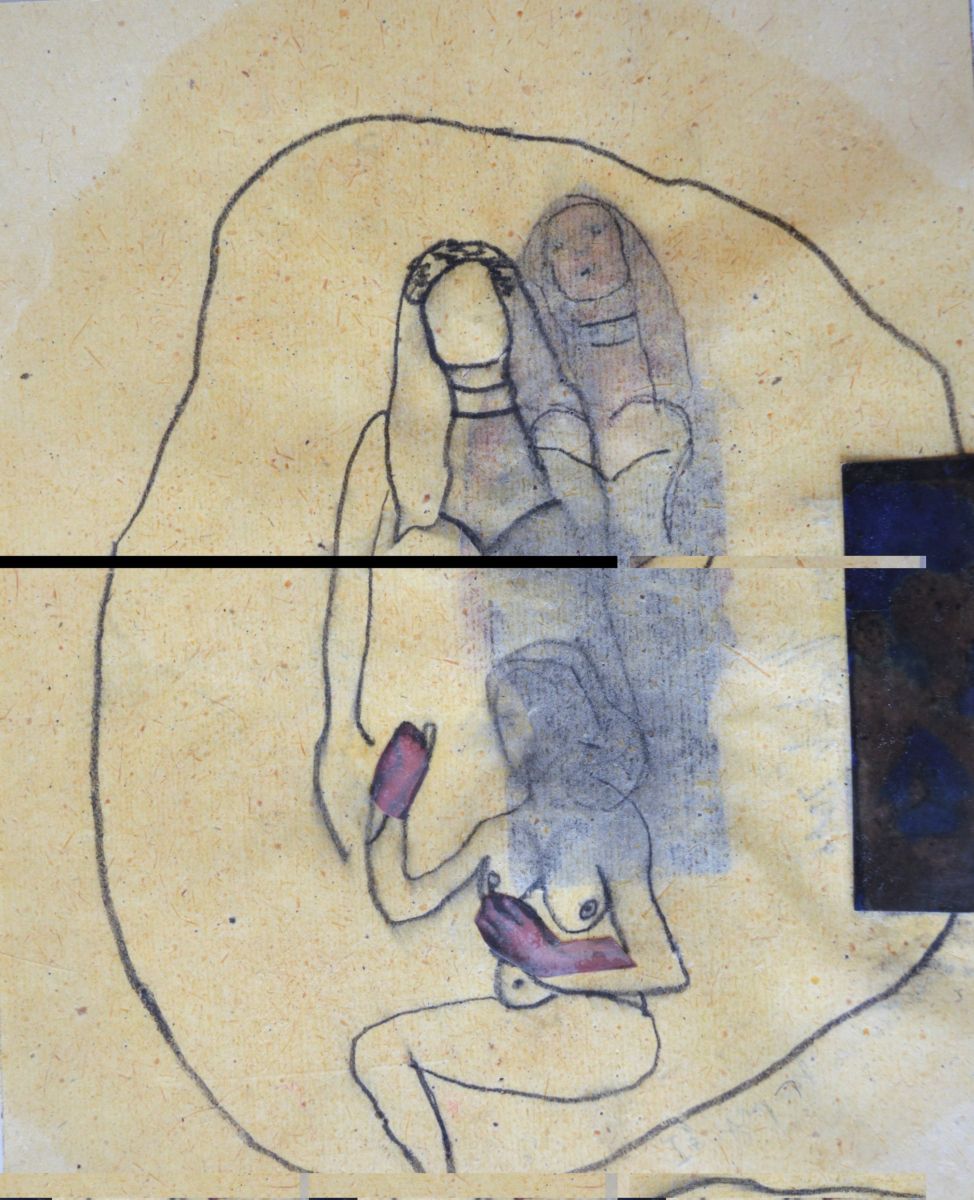
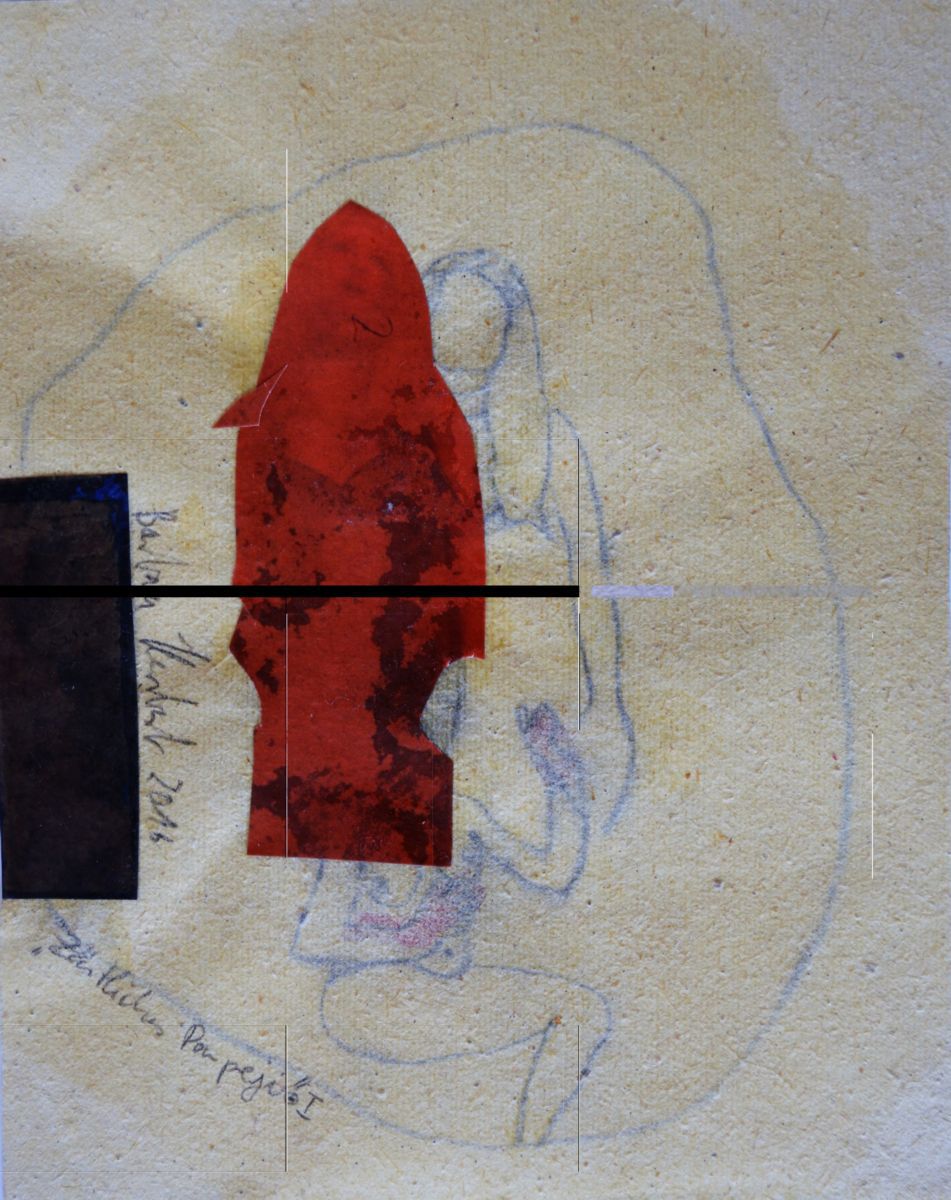
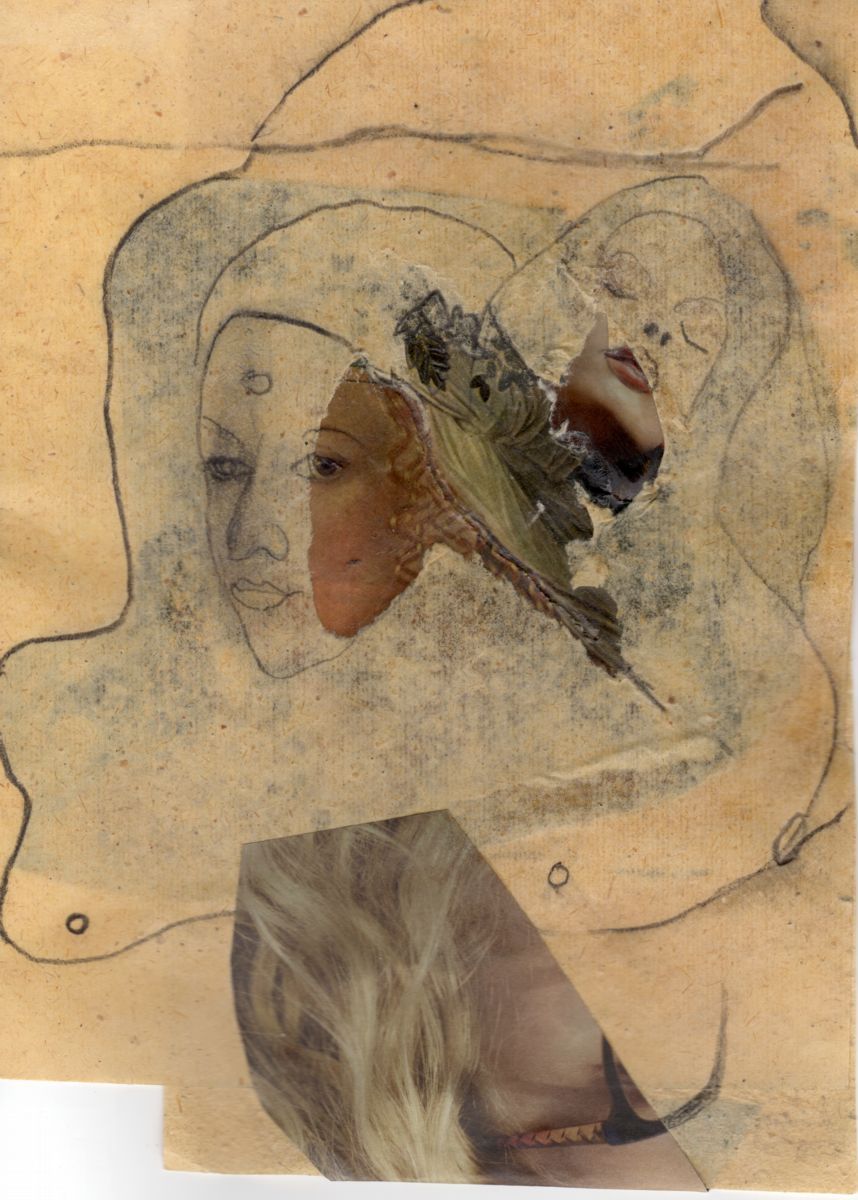
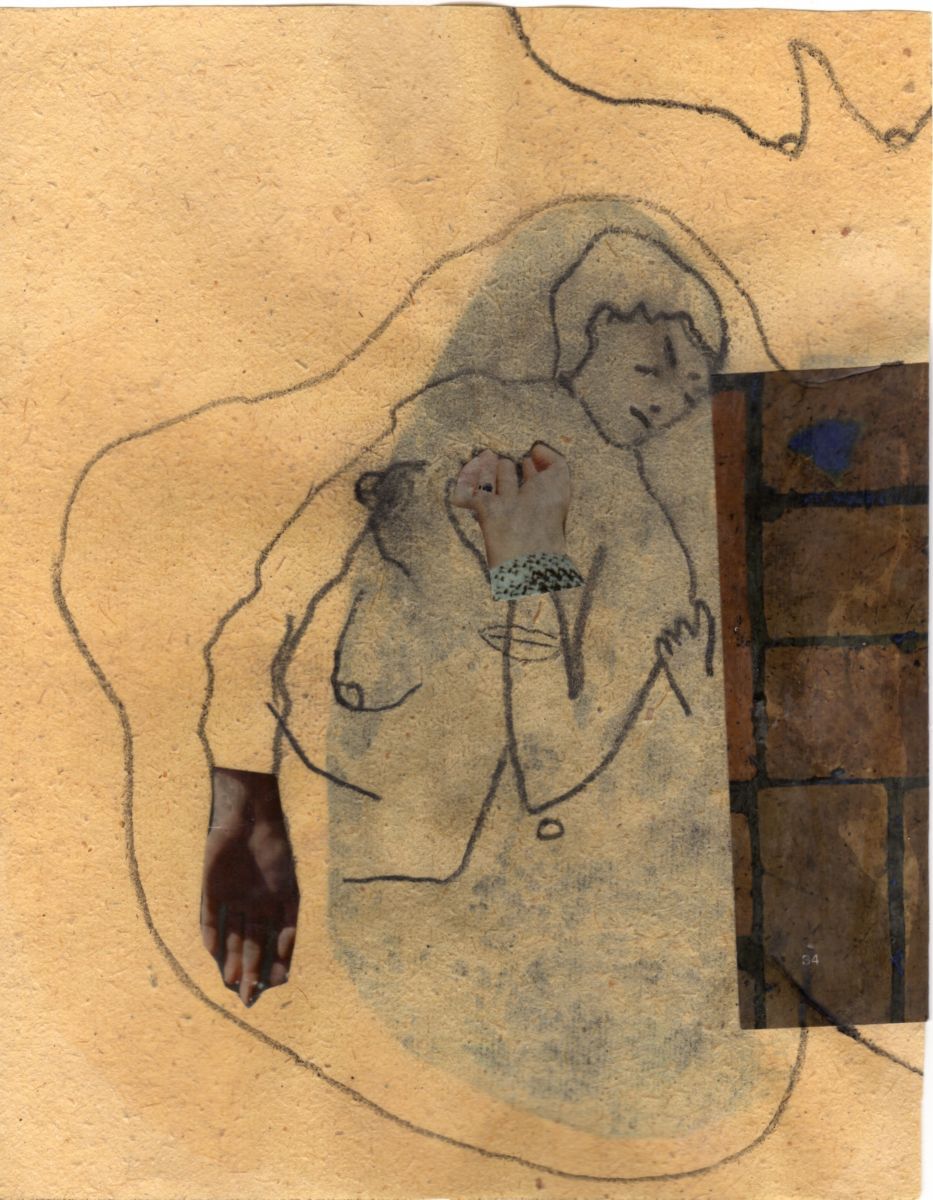
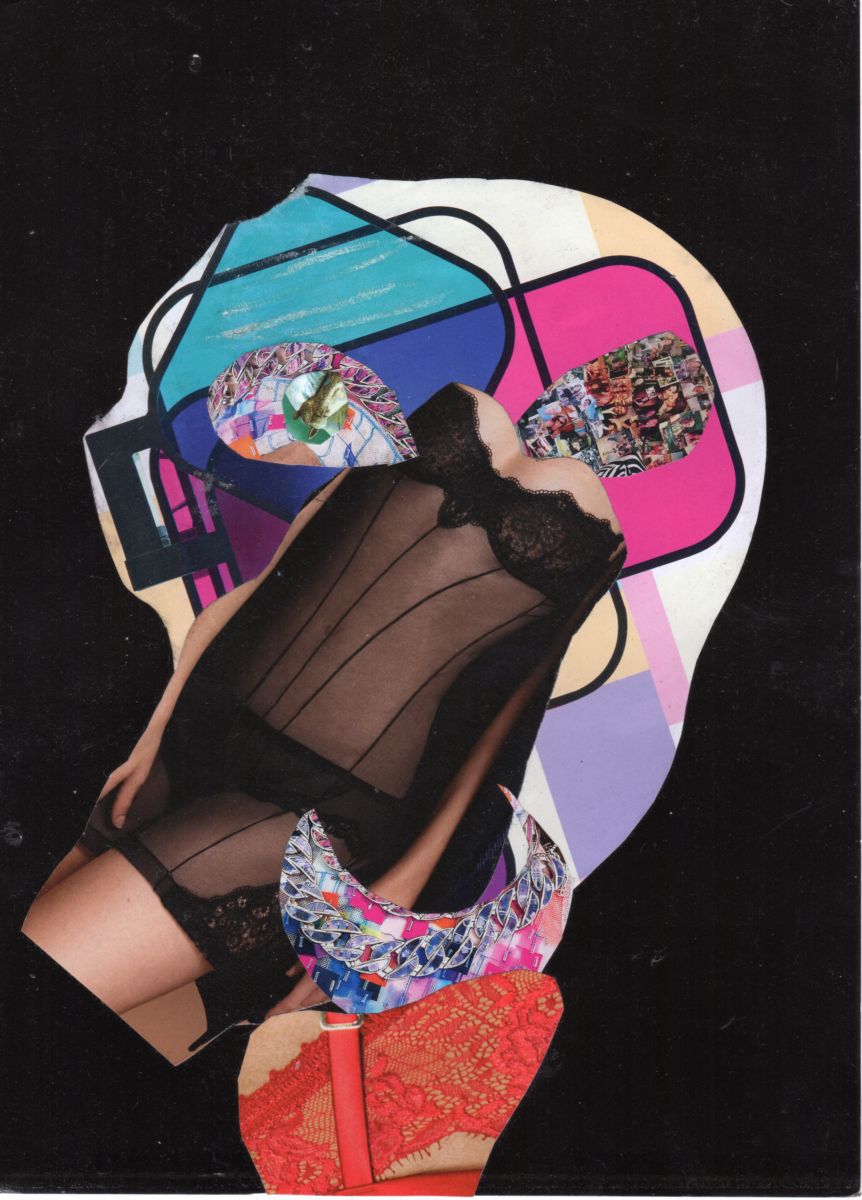

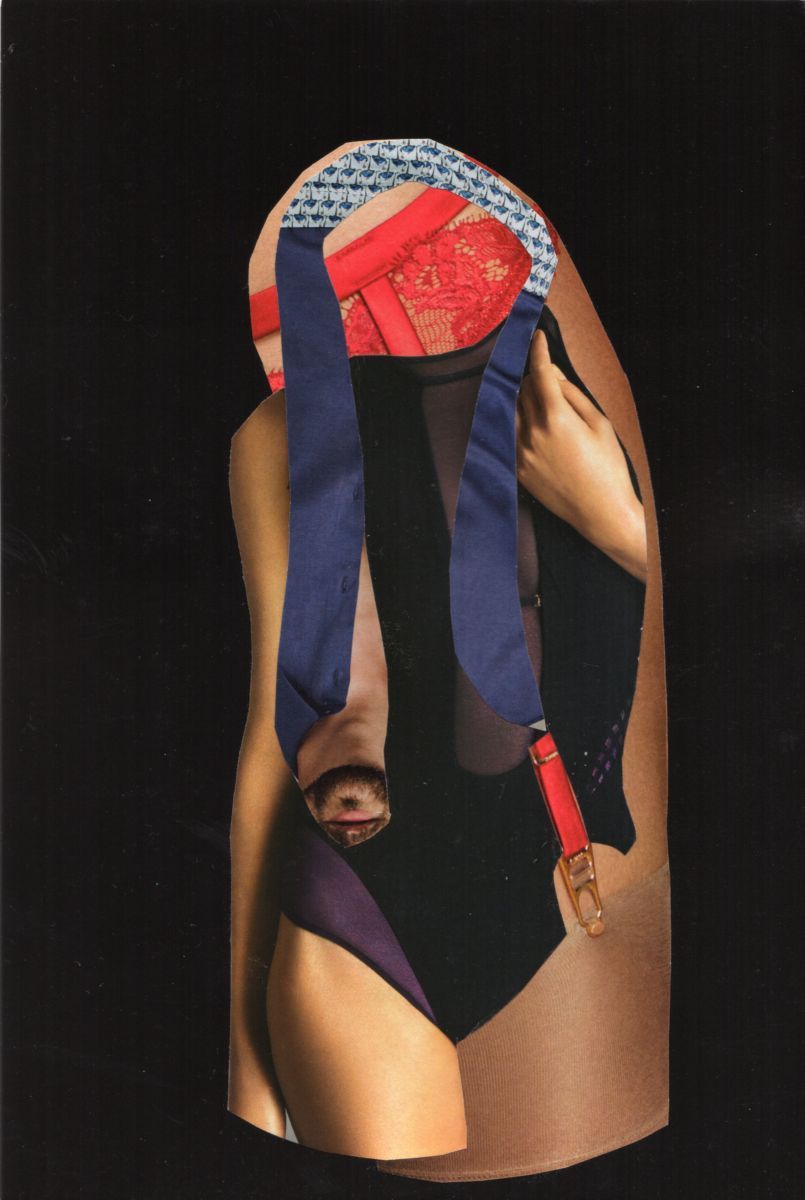

Be First to Comment